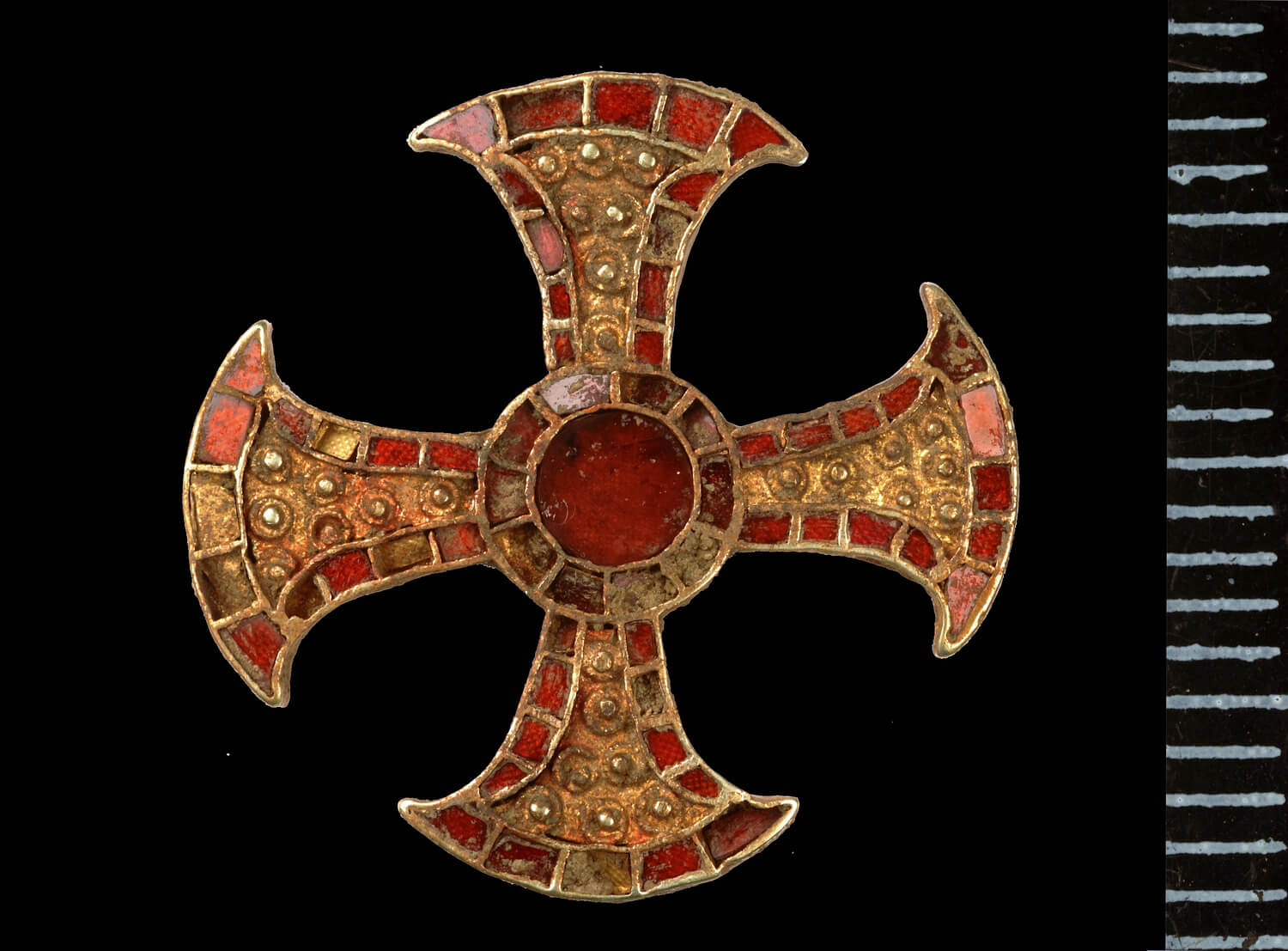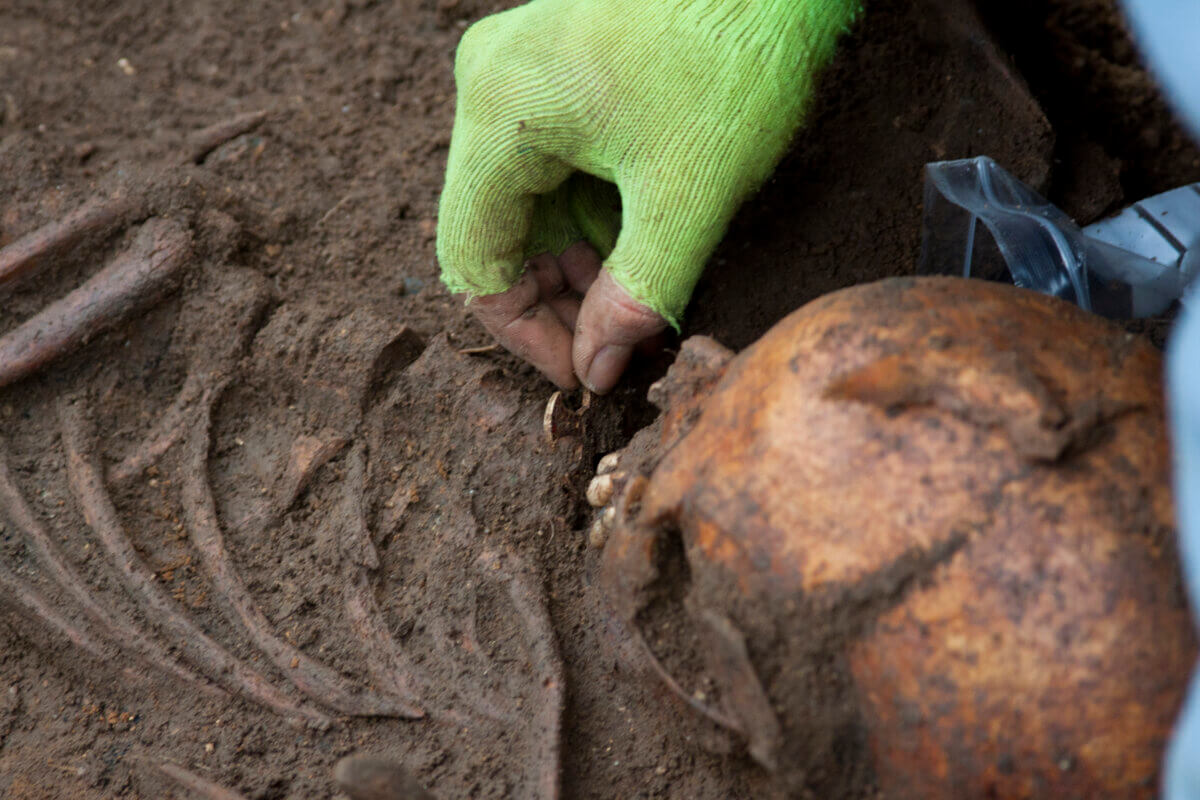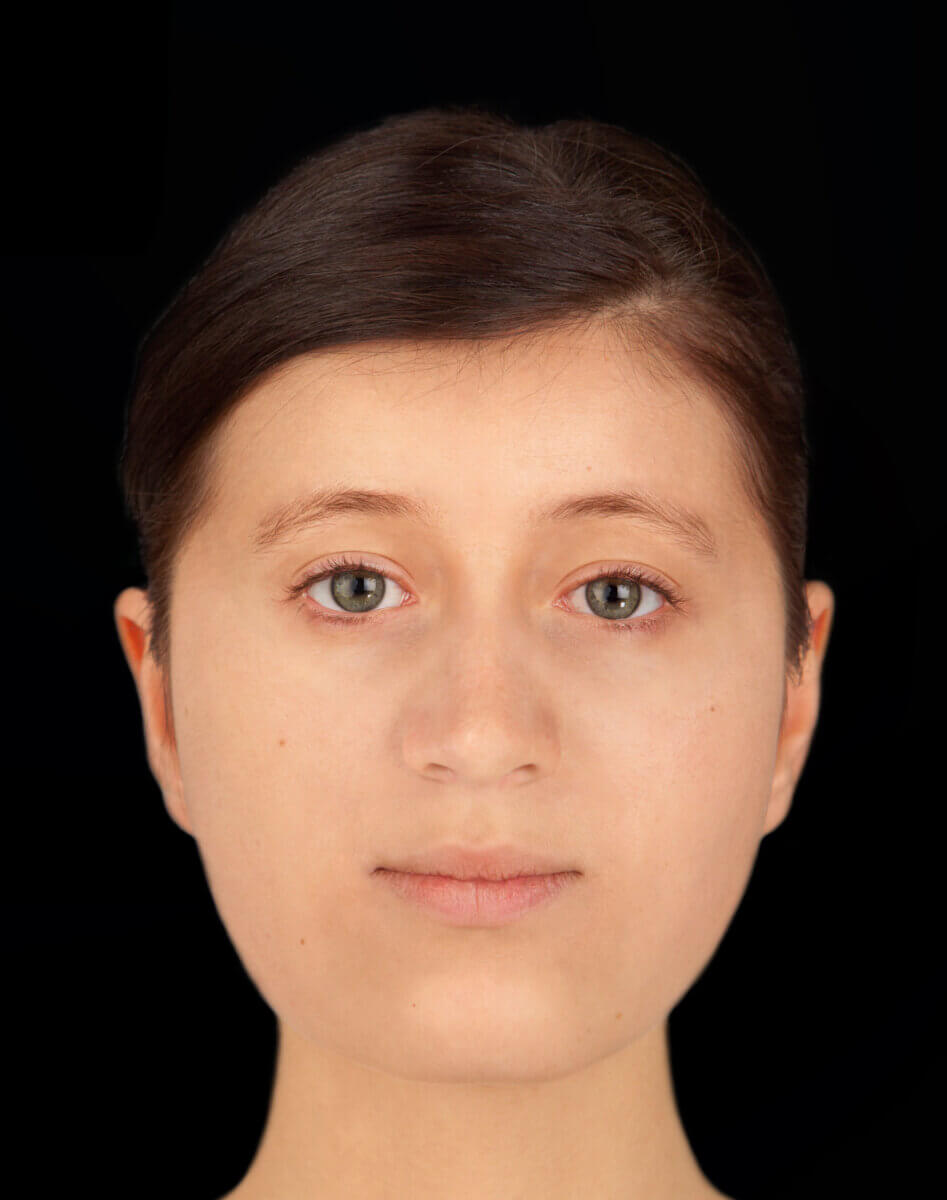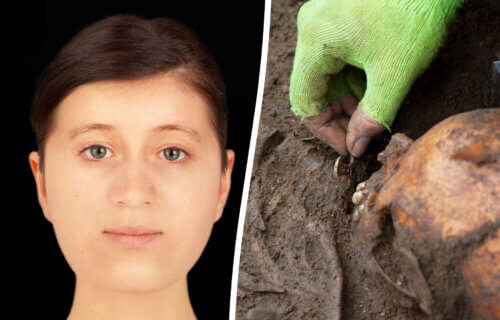CAMBRIDGE, United Kingdom — The reconstructed face of a teenage girl from the 7th century may reveal what one of England’s earliest Christians looked like. Scientists in the United Kingdom say there’s an interesting twist in her tale. Chemical analysis of her bones and teeth suggest that she emigrated from southern Germany to the U.K. when she was around seven years-old.
Her remains were found near Cambridge, accompanied by a rare gold and garnet cross. This burial is one of only 18 bed burials unearthed in the country, suggesting that she may have had royal lineage. The burial appears linked to two others in the vicinity. Archaeologists speculate that these individuals might have been part of a group dispatched from Germany to convert the Anglo-Saxons to Christianity.
After the analysis of her skull, the face of the girl, who was about 16 years-old, was reconstructed. Her renowned “Trumpington Cross” will be displayed publicly alongside her reconstructed image for the first time.
The teen’s remains were first discovered near Cambridge in 2012. The ornate cross, one of only five ever discovered in Britain, identifies her as one of England’s earliest converts to Christianity.

Hew Morrison created the detailed image using measurements of the young girl’s skull and tissue depth data for Caucasian females. While the precise color of her hair and eyes could not be determined due to the lack of DNA analysis, the image provides a compelling representation of her appearance shortly before her demise.
“It was interesting to see her face developing. Her left eye was slightly lower, about half a centimeter, than her right eye. This would have been quite noticeable in life,” says Morrison, a forensic artist, in a media release.
A “you-are-what-you-eat” analysis of the young woman’s teeth and bones, conducted as part of a PhD research at the University of Cambridge, has revealed additional intriguing details about her brief life.
Bioarcheologists Dr. Sam Leggett and Dr. Alice Rose, and archaeologist Dr. Emma Brownlee, showed the girl relocated to England from a region near the Alps, likely southern Germany, about a decade before her death. They also discovered that the proportion of protein in her diet declined by a small yet significant amount after her arrival in Britain, a change that took place towards the end of her life. This suggests the period between her arrival and burial was tragically brief.
“She was quite a young girl when she moved, likely from part of southern Germany, close to the Alps, to a very flat part of England. She was probably quite unwell and she travelled a long way to somewhere completely unfamiliar – even the food was different. It must have been scary,” says Dr. Leggett, now at the University of Edinburgh.

Previous analysis revealed that the girl had suffered from an illness, but the exact cause of her death remains unknown.
Her remarkable burial involved her being laid on a carved wooden bed adorned with the rare cross, gold pins, and fine clothing. The ornate gold and garnet cross identifies her not only as one of the earliest converts to Christianity in England but also as a member of the aristocracy, or potentially royalty.
The most famous example of such a cross was found in the coffin of St. Cuthbert, at Durham Cathedral. This ties into the history of the period, as in 597 AD, the Pope had sent St. Augustine on a mission to England to convert the pagan Anglo-Saxon kings, a process that spanned several decades.
“She must have known that she was important and she had to carry that on her shoulders. Her isotopic results match those of two other women who were similarly buried on beds in this period in Cambridgeshire,” Dr. Leggett continues.
“So it seems that she was part of an elite group of women who probably travelled from mainland Europe, most likely Germany, in the 7th century, but they remain a bit of a mystery. Were they political brides or perhaps brides of Christ? The fact that her diet changed once she arrived in England suggests that her lifestyle may have changed quite significantly.”

“These are intriguing findings, and it is wonderful to see this collaborative research adding to our knowledge of this period. Combining the new isotopic results with Emma Brownlee’s research into European bed burials really does seem to suggest the movement of a small group of young elite women from a mountainous area in continental Europe to the Cambridge region in the third quarter of the seventh century,” adds Dr. Sam Lucy, a specialist in Anglo-Saxon burial from Newnham College, who published the Anglo-Saxon excavations at Trumpington Meadows.
“Southern Germany is a distinct possibility owing to the bed burial tradition known there. Given the increasingly certain association between bed burial, such cross-shaped jewelry, and early Anglo-Saxon Christianity, it is possible that their movement related to pan-European networks of elite women who were heavily involved in the early Church.”
“The story of this young woman goes to the very heart of what our exhibition is all about – new research making visible the lives of people at pivotal moments of Cambridgeshire’s history. MAA holds one of Britain’s most important collections of Early Medieval archaeology and the Trumpington bed burial is so important. It looks like it still has much more to teach us,” concludes Dr. Jody Joy, the exhibition’s co-curator.
The exhibition at Cambridge’s Museum of Archaeology and Anthropology will run until April next year and will also include pottery and textile from the Bronze Age Must Farm settlement, dubbed “Britain’s Pompeii,” as well as the amulet of a feast-loving chieftain, a carving of an Iron Age man and a young friar’s ivory belt buckle.
South West News Service writer James Gamble contributed to this report.

